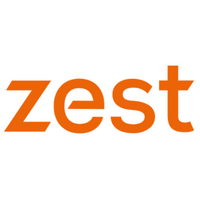Ten easy ways to ensure your employee platform provides a consumer experience

Most of you will have realised that benefit providers have been consumerising employees for a number of years now. This means that they have been offering their products and services via a shop window (portal) with a shopping style user journey. It has taken a while for the reward and benefits technology providers to catch on to this and make it a positive trend.
Recently, most providers and organisations have obsessed around trying to mirror an Amazon style shopping experience. You can’t blame them as Amazon spend a lot of money on the UX (User Experience) to make the site easy to use and repeatable. The successful providers now realise that you need to show value, simplify the options and have an easy obvious next step.
From a user perspective, I don’t have time to figure out how to access and use the benefits system. I want to be told where to look with an easy link into the system. If I need to remember passwords or I need to search for the link to get into the system, I will give it roughly ten minutes before I stop and wait for HR to chase me and hope there is a link. After ten more minutes I will have forgotten I even get benefits, my day job tasks have kicked in and I don’t have time to worry about anything else.
As a Dad and someone from generation X, I grew up in the era of vinyl, VHS and the invention of personal computers that had less processing power than a modern calculator. I have seen technology transform multiple times over within the past four decades, including vinyl to cassettes to CDs to MP3s to live streaming online. Ironically we’re now back to the start with vinyl making a resurgence.
What’s next?
Many people see the end of devices with everything being held in the cloud using artificial intelligence like Alexa or Siri to voice-control access.
With these ever-changing systems and easy access to information, you can no longer look at generation X, Y or millennials and generalise about who can use technology and who cannot. You need to consider more than just age and profession.
We are all consumers on one level or another and we all need an easy to use system to purchase things. This can be using the internet or entering a shop. How many department stores have you been in where you get frustrated trying to pay. Where are the tills? Why can’t I find the toy section etc? Also, who chose that awful music? Everyone needs to consider this consumer experience and that includes employee benefits technology systems.
So how do you provide a good consumer experience?
Here are some easy steps to ensure you provide an engaging platform –
1) Blockers
Remove any blockers to getting onto the system, offer SSO (Single Sign On) if you can or an easy to remember URL.
2) Audience
Think about your audience, are they mainly offline or online, are they tech savvy or not, are they mainly young, varied or older, etc…
3) Communications
Drive them to the system with offline and online communications. Try a postcard or business card with the general log in details i.e. Username= email Password = NI number.
4) User experience (UX)
User Experience needs to be simple and intuitive, can I easily see what I came to see? Are the next steps obvious? Is the confirmation or check out easy to see? Can I back up without causing system issues?
5) Categories
You need to display the benefits clearly – core and optional -so they can choose at a high level with the ability to drill in if they are interested.
You could even categorise the options but I would be wary of adding too many layers as this can add time and frustration if you don’t categorise properly. Perhaps have a selection of key benefits and categories on the landing page
6) Value
Value is a key component to any consumer. It does not matter if you are offering to pay 100% or it’s a voluntary benefit, the employee needs to see value in what they are getting. Without value, the investment is wasted money. So if you offer a discount on a product and I find it cheaper on Amazon, don’t expect my engagement to increase.
7) It works!
It sounds basic but with Amazon things rarely go wrong. It is efficient execution and I don’t get charged the wrong amount. Why should benefits be any different?
8) One place
It’s good to see everything together, consistently communicated in the same style. This is why total reward communications through a portal adds such value.
9) Useful
If the benefits are useful to me then tell me. I shouldn’t have to work it out all by myself.
10) Broad Offering
It’s more than financial benefits. Remember I’m a dad and sometimes I work at home, so paternity and flexible working are very valuable to me.
In conclusion, you need to understand your audience, remove any blockers to accessing the system and make sure there is an easy to follow journey with obvious next steps. Once you have these core elements in place, you are well on the way to providing an engaging, relevant well communicated benefits scheme.
Alan Meyers is business development director at Staffcare.
This article was provided by Staffcare.
Supplied by REBA Associate Member, Zest
Zest is the next generation platform that’s reinventing the world of employee benefits.







